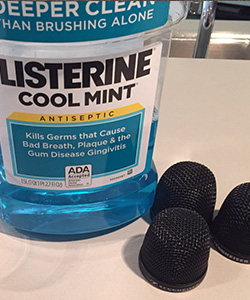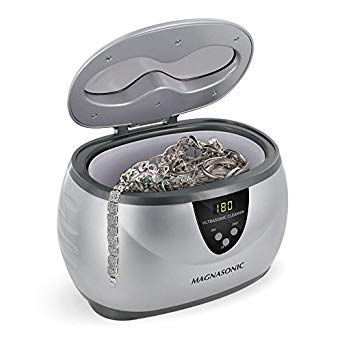In my last blog, I wrote about how thinking of artists and project managers as clients rather than bosses can really change your perspective for the better. An essential part of being your own boss is selling yourself to other potential clients, and social media is becoming an even more significant part of that. The way you present yourself online can have a substantial effect on how people perceive you and your approach to work, whether you’re consciously image crafting or not. Everyone’s situation and goals are different, but there are a few guidelines it is wise to follow when starting to navigate online self-promotion.
Social media can be a low-cost and effective way of getting your name out there and quickly showing people what you’re about. However, it can be a double-edged sword. Whether you agree with it or not, it is common practice to perform internet searches on people before inviting them for an interview. Plus, in an industry as tight-knit as ours, it’s inevitable that you’ll see the same names popping up on discussion threads and groups, so we often form impressions of each other before we ever meet or think to be on our best behaviour to land a job. It’s worth reviewing your privacy settings regularly, and perhaps making a separate list or entire account for work-related posts (this also saves your poor family and friends from being bored by tech talk!). Even if none of your posts are public, discussion groups can have many more people watching than you might realise, and anything you put in writing can be screenshotted and forwarded, so think carefully before posting. Make sure you’re happy to stand by what you say if challenged and avoid posting when angry or under the influence. Getting drawn into an argument online rarely achieves anything but time-wasting, and tends to show all parties in a bad light.
If you want to post about a gig, especially sharing photos, ask whoever is in charge first. Bear in mind that a non-disclosure agreement might have been buried in the small print of your contract if you have one, or someone might have signed an NDA on behalf of everyone in the department without your knowledge (these may not be legally binding, but it will not help your professional relationships if you break them). The rule of thumb is it’s okay to post photos of things the audience can see after the gig has finished, but always check before taking the photo. Don’t take photos of celebrities backstage! Ever! It is rude and unprofessional, and you may end up answering some very angry security guards. Never post pictures of your pass until after the gig or tour, and alter the image and make it clear it’s an out-of-date one if you must post it at all. Even if you don’t think it matters for your little gig, posting photos of passes encourages others to do it. Not everyone forging a pass is simply trying to see a show for free. Contributing to a culture of pass posting compromises everyone’s safety throughout the industry. Just don’t do it.
So what do you post then? This blog post from Wait but Why breaks down what makes a good or bad post. In short, if you’re trying to build your brand for work, your posts should be informative, entertaining and/or engaging. Everyone is human, and we all have bad days, but constant moaning about work does not show your best side. It is better to get stuff off your chest with close friends, ideally in person, when you can instead. Simply posting that you are in X venue doing Y gig is frankly boring. Add a bit of feeling or humour, like you’re so excited to finally work for a band you’ve admired for years, or how you totally deserve your afternoon cupcake after checking the coverage in a venue with so many stairs. It doesn’t have to be groundbreaking, but personalising your posts will help people warm to you and remember you instead of just scanning past, along with all the other utilitarian “look at me, I’m at work” stuff.
How often should you post? Most people I know would only post once roughly every 5-10 gigs on average. Of course, that varies. Some people never share anything, and others can’t do a day’s work without telling the world about it. There is also a time and a place for social media. If you have a phone in your hand, you can’t lift a flight case or coil a cable. Potential clients might be impressed by your stage selfies, but your current colleagues and clients will notice your lack of focus on the job at hand.
The other side of all this is how you perceive what other people share. It’s often said that social media makes us compare our every day with everyone else’s highlights. If you have a lot of friends in the industry, it can seem like everyone’s having the best time touring the world but you. Remember that most people can’t resist posting a photo of themselves drinking cocktails on their day off, but they’re much less likely to publicly admit that they had a terrible soundcheck, or that they’ve been suffering from crippling diarrhea ever since the second show. Take everything with a pinch of salt and know that you’re only seeing people at their best, or even better than that, if they see telling the whole truth as optional.
The thing is those people who post all the time appear 5-10 times as busy as their peers by comparison. It is also common for prolific posters to embellish the truth or present things in an ambiguous way. Saying you’re working at a festival, accompanied by a photo of the main stage taken from front of house when you’re actually a stagehand on the fourth stage isn’t a lie, but it isn’t honest. There’s a trend of posting photos of nice desks and outboard gear when the person posting is not the one using it. They never say they are the engineer, but it’s heavily implied, and it’s dishonest. It can feel like these people are putting themselves at an unfair advantage and it can be tempting to sink to their level and play that game too. There’s nothing stopping you, but when everyone knows everyone else, it’s very likely you’ll get caught out sooner or later. Even if you delete those posts, screengrabs can come back to haunt you years down the line.
At the end of the day, it’s up to you to judge what is appropriate to share, and with whom. However, no amount of bragging online will make you good at your job in real life. I’m far from perfect, but I try to remain positive and professional online and take the high road as much as possible so I can sleep at night. I find I do my best work when I’m well rested.
Editors Note More on Social Media Tips and Career Development.

 Many folks recommended disinfecting wipes to quickly wipe down the grill of the microphone after use. Also, consider using a non-flavored Listerine.
Many folks recommended disinfecting wipes to quickly wipe down the grill of the microphone after use. Also, consider using a non-flavored Listerine.




